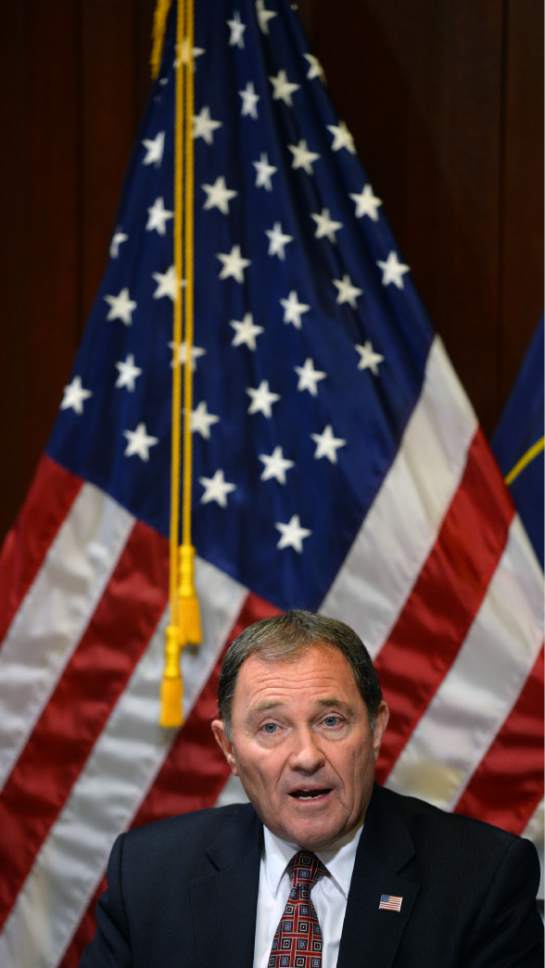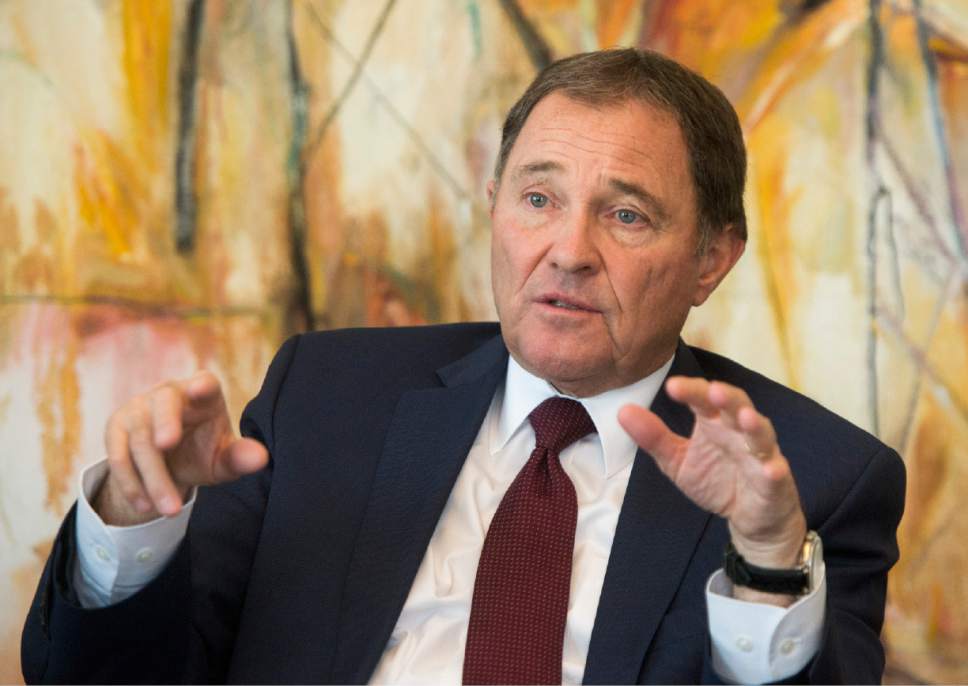This is an archived article that was published on sltrib.com in 2017, and information in the article may be outdated. It is provided only for personal research purposes and may not be reprinted.
Gov. Gary Herbert met briefly Monday with President Donald Trump at the White House during the signing of a bill repealing federal-land planning reforms opposed by Utah political leaders and extractive industries.
At the end of the Obama administration, the Bureau of Land Management implemented so-called BLM Planning 2.0 to give a landscape-scale perspective in resource plans, but critics blasted it for giving "radical special interests" equal footing with local officials.
"We want to optimize the management, the outcome, the results of our public lands and multiple use, particularly under the BLM, which of course is the biggest landowner in Utah. Forty-two percent of the land is controlled by the BLM," Herbert said in a conference call with reporters.
The signing ceremony took place in the White House's Roosevelt Room, where Trump joked about the small size of the desk he used to sign four bills rolling back regulations implemented by his predecessor.
"Only one time in our history did a president sign a bill to cancel federal regulations," Trump said. He endorsed continued use of the Congressional Review Act "to remove every job-killing regulation we can find" and promised "a lot more coming."
Herbert did not discuss the Bears Ears National Monument, which the Legislature has asked Trump to rescind, but he did bring it up with Trump's new Interior secretary, Ryan Zinke.
"I invited Secretary Zinke to come to Utah to look at the public lands, and particularly the Bears Ears issue, and we all agree there needs to be additional protections for that area," Herbert said. "We thought the best way was legislatively. That is the best way to protect the area in a permanent way and give the Native Americans more management capability."
A public lands bill sponsored last year by Rep. Rob Bishop, R-Utah, which would have established two national conservation areas for San Juan County, stalled in Congress as President Barack Obama was leaving office. That failure prompted the former president to designate the monument at the request of five Indian tribes with cultural ties to Bears Ears.
Conservationists fumed at the planning-rule repeal Monday, arguing the move puts resource planning under the control of extractors, ranchers and their allies in local government.
Groups had lauded the new rule for ensuring greater public participation in resource-management planning.
Utah political leaders saw it differently.
"It adds another layer of redundancy and the process for our resource-management plans. It takes a number of years now. This just adds another layer that does not provide a better outcome and actually diminishes the role of the state and local governments," Herbert said. "This idea of dragging out decisions for years upon years is not helpful. It just creates a lot of anxiety in people and uncertainty. We never get to a resolution."
Also present at Monday's signing was Rep. Chris Stewart, R-Utah, who applauded the planning rule-repeal, known as House Joint Resolution 44.
"This rule ignored thousands of meaningful comments submitted by state and local officials. By signing this resolution of disapproval, President Trump is returning power back to the states and local communities," Stewart said in a statement.







